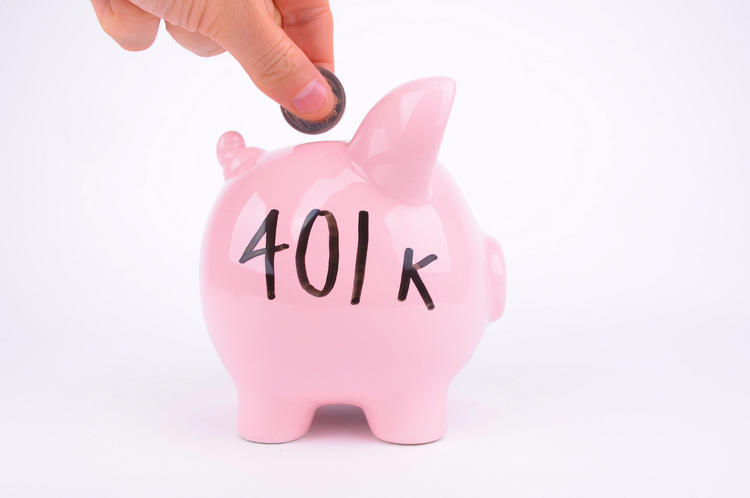Healthcare Provider Update: Healthcare Provider for Kraft Kraft Heinz Company primarily offers its employees a healthcare plan through the Aon Health Solutions, which oversees benefits and health resources for the company. As a sizable employer, Kraft provides a variety of health plans, typically including comprehensive medical, dental, and vision coverage. Potential Healthcare Cost Increases in 2026 In 2026, healthcare costs are anticipated to surge significantly for Kraft employees, paralleling broader trends across the Affordable Care Act (ACA) marketplace. With health insurance premiums projected to increase by an average of 18%-and in some states exceeding 60% due to the potential expiration of enhanced federal premium subsidies-many workers could face a financial burden. This perfect storm of rising medical costs and shifting insurance policies signals an increase in out-of-pocket expenses, revealing the critical need for strategic planning among employees to manage their healthcare finances effectively. Click here to learn more
| Company Name | For plan years beginning in | Year | Month | First Segment | Second Segment | Third Segment | Plan Type |
| Kraft | All | 2024 | May | 5.18% | 5.41% | 5.62% | |
| Kraft | All | 2023 | May | 4.91% | 5.15% | 5.34% |
Have you looked at the news recently? Every news site that you visit, the headlines are plastered with “HISTORICAL INFLATION RATES” or “HIGHEST INFLATION RATES IN THE LAST 39 YEARS”. As an employee of Kraft, what does this actually mean for you as you approach retirement?
First off, let us define what inflation is. Inflation is known as the increase in general price levels of goods and services. Inflation is measured through the CPI, the Consumer Price Index, which is produced by the Bureau of Labor Statistics. The U.S. Bureau of Labor Statistics found that a gallon of whole milk cost $3.66 in October 2021, which is 8% more from October 2020 at $3.38 per gallon. Combined with the other goods and services, we would find an average increase in prices and calculate how much prices have increased within a given time period. Normally, the Federal Reserve targets an inflation rate of 2% and since 2016, it has been pretty consistent, only off by about a half percentage point. However, in 2021, the annual inflation rate was 7%, drastically different from the 1.4% increase in 2020 and the 2.3% increase in 2019. To put this in perspective, from 2018 to the end of 2020, CPI grew at a cumulative 5.7%. So within a single year, inflation grew faster than the three years prior.
Inflation is an expected occurrence and many people who retire tend to expect a consistent rate over their life span and calculate their retirement expenses with this in mind. However, these calculations quickly change when there are abrupt increases in inflation. Unexpected inflation can have devastating effects on a Kraft employee’s savings as it whittles away at your spending power faster than you expect it to. Today, you might be able to buy groceries within a certain budget, but during an inflation spike, groceries will outpace your budget and soon enough, you’ll find yourself spending considerably more for your normal grocery bundle.
In order to control the rapid rise of inflation, the Federal Reserve uses interest rates to dissipate inflationary pressures. As interest rates increase, inflation generally decreases. This relationship is caused by how interest rates affect the rate of borrowing money. When interest rates are low, people will borrow money as they pay less in interest. This fuels the economy and increases inflation. As interest rates rise, people will borrow less and the markets will move slower as there is less fuel to add to the fire. These factors go hand in hand in an economic balancing act.
You may be wondering: “How does this affect my Kraft pension? Should I be choosing lump-sum or annuity?” As pension lump sum amounts are calculated using the current interest rates, choosing lump-sum versus annuity can be a difficult decision. Since lump-sum pensions are inversely affected by interest rates, the higher interest rates rise, the less you will receive from your Kraft lump-sum pension. As interest rates rise however, annuity pensions become a lot more attractive as they use current interest rates to calculate your lifetime monthly payments.
In regards to healthcare, it is lagging behind the country’s 7% inflation rate and has only risen 2.5% over this past year. However, we are seeing a labor shortage in the healthcare sector, which can lead to a rise in wages to attract workers and would ultimately increase prices and insurance premiums for patients. Many Kraft retirees typically rely on Medicare to support them in their healthcare costs, however, Medicare rarely covers all costs and patients are required to pay a premium on top of out-of-pocket expenses. These premiums will increase as inflation continues to increase, leading to an overall increase in expenses for healthcare. For the upcoming 2022 year, Medicare Part B premiums increased by 14.5%, pushing the standard monthly premium to $170.10. Even though, as a whole, healthcare costs have not risen in line with inflation, we have seen very high inflation for those nearing or at retirement age.
With increasing prices in drug expenses and Medicare premiums, the Employee Benefit Research Institute (ERBI) found in their 2022 report that couples with average drug expenses would need $296,000 in savings to cover those expenses in retirement - a 10% increase from the year prior. Couples with higher drug expenses would need $361,000 to cover those healthcare costs - an 11% increase from the year prior.
Overall, the landscape of the economy is rapidly changing and these recent developments have been shifting people’s expectations and forecasts for retirement. Understanding how inflation and interest rates will affect your retirement is a vital step in crafting a successful retirement plan.
Featured Video
Articles you may find interesting:
- Corporate Employees: 8 Factors When Choosing a Mutual Fund
- Use of Escrow Accounts: Divorce
- Medicare Open Enrollment for Corporate Employees: Cost Changes in 2024!
- Stages of Retirement for Corporate Employees
- 7 Things to Consider Before Leaving Your Company
- How Are Workers Impacted by Inflation & Rising Interest Rates?
- Lump-Sum vs Annuity and Rising Interest Rates
- Internal Revenue Code Section 409A (Governing Nonqualified Deferred Compensation Plans)
- Corporate Employees: Do NOT Believe These 6 Retirement Myths!
- 401K, Social Security, Pension – How to Maximize Your Options
- Have You Looked at Your 401(k) Plan Recently?
- 11 Questions You Should Ask Yourself When Planning for Retirement
- Worst Month of Layoffs In Over a Year!
How does the pension plan offered by Kraft Foods Global, Inc. compare to standard retirement plans in terms of employer contribution allocation, and what specific policies should employees be aware of when considering their retirement options through Kraft Foods Global, Inc.?
Kraft Foods Global, Inc. Pension Plan vs. Standard Retirement Plans: The pension plan offered by Kraft Foods Global, Inc. operates as a defined benefit plan, which allocates employer contributions based on years of service and compensation, ensuring steady retirement income based on a formula. This contrasts with standard retirement plans like 401(k)s, where contributions are often employee-driven and subject to market performance. Employees should understand that the guaranteed nature of a pension provides long-term stability, but they must consider the plan’s specific terms regarding eligibility, vesting, and distribution options.
In what ways do the eligibility requirements for contributions to the retirement plans at Kraft Foods Global, Inc. align with IRS regulations for 2024, and what should employees know about these rules when planning their retirement funds?
Eligibility and IRS Regulations for 2024: The eligibility requirements for Kraft Foods Global, Inc.’s retirement plan align with IRS regulations by requiring one year of service for plan participation, with no minimum age requirement. This is typical for defined benefit plans and is in line with IRS standards for qualified plans. Employees planning their retirement funds should ensure they meet the service requirements and understand that contributions are employer-funded rather than employee-driven, unlike other retirement plans that follow IRS contribution limits(Kraft Foods Global Inc_…).
Considering the defined benefit plan structure of Kraft Foods Global, Inc., how are distributions processed at retirement, and what potential tax implications should employees consider when deciding between a lump sum or annuity option upon retirement?
Distribution Options and Tax Implications: Kraft Foods Global, Inc.’s defined benefit plan offers both lump sum and annuity options for retirement distributions. Employees must carefully consider tax implications: lump sums may be subject to immediate taxation, while annuity payments spread income over time, potentially offering tax advantages. Employees should evaluate their financial needs and tax situation to choose the most suitable option for their retirement(Kraft Foods Global Inc_…).
How does Kraft Foods Global, Inc. ensure the stability and sustainability of its retirement funds, known as the retirement plan funding levels, and what measures are in place to protect employees' interests in case of economic downturns?
Retirement Plan Stability and Economic Downturns: Kraft Foods Global, Inc. ensures the stability and sustainability of its retirement funds through a well-funded pension plan, with funding levels reported at over 100%. This level of funding offers protection against economic downturns, safeguarding employee interests. The company also maintains a significant fidelity bond, providing additional security for plan participants in case of adverse financial events(Kraft Foods Global Inc_…).
What resources are available to employees of Kraft Foods Global, Inc. for financial planning assistance related to their retirement, and how can knowledge of these resources influence their decisions regarding retirement savings and benefits?
Financial Planning Resources: Employees of Kraft Foods Global, Inc. have access to various resources, such as retirement plan summaries and consultations with financial planners. These tools can help employees make informed decisions regarding their retirement savings and benefits, potentially influencing their strategies for maximizing contributions and taking advantage of plan features like early retirement options(Kraft Foods Global Inc_…).
How should employees at Kraft Foods Global, Inc. approach the process for requesting a distribution from their retirement plan, and what specific information is required to expedite this process effectively?
Requesting a Distribution: Employees at Kraft Foods Global, Inc. must contact the plan administrator to request a distribution. Providing accurate personal information, retirement dates, and preferred payment methods is essential to expedite the process. It’s crucial to ensure that all documentation is complete to avoid delays(Kraft Foods Global Inc_…).
How does the participation in the additional retirement plans offered by Kraft Foods Global, Inc., such as the Thrift Investment Plan, benefit employees in the context of overall retirement savings and IRS contribution limits for 2024?
Additional Retirement Plans and IRS Contribution Limits: Participation in Kraft Foods Global, Inc.’s Thrift Investment Plan allows employees to enhance their retirement savings while adhering to IRS contribution limits for 2024. This plan complements the pension plan by offering a defined contribution option, giving employees the chance to maximize their overall retirement savings through a combination of employer contributions and personal investments(Kraft Foods Global Inc_…).
What communication channels does Kraft Foods Global, Inc. provide for employees to ask questions or seek clarification regarding their retirement benefits, and what should employees include in their inquiries to receive detailed answers?
Communication Channels for Retirement Benefits: Kraft Foods Global, Inc. provides clear communication channels through its HR department and plan administrators, where employees can ask detailed questions about their retirement benefits. It’s advisable for employees to include specific details in their inquiries, such as their years of service and expected retirement dates, to receive thorough responses(Kraft Foods Global Inc_…).
How do the overall retirement plan offerings at Kraft Foods Global, Inc. facilitate long-term financial security for employees compared to industry standards, and what unique features should employees leverage to maximize their retirement savings?
Maximizing Long-Term Financial Security: The retirement plan offerings at Kraft Foods Global, Inc. focus on long-term financial security by providing guaranteed income through its defined benefit structure. Compared to industry standards, this approach offers employees a more predictable and stable source of retirement income. Employees should leverage features like early retirement options and understand their full benefit potential to optimize their financial outcomes(Kraft Foods Global Inc_…).
What strategies should employees at Kraft Foods Global, Inc. employ to ensure they remain informed about ongoing changes in retirement planning regulations and plan offerings as they approach retirement, especially in light of any adjustments to IRS rules or company policies?
Staying Informed on Retirement Plan Changes: Employees should stay informed about ongoing changes in retirement planning regulations and company policies by regularly reviewing updates from Kraft Foods Global, Inc. and keeping track of IRS adjustments. Attending company-provided financial planning seminars and consulting with financial advisors can help ensure that employees are well-prepared for retirement, especially as IRS rules or plan offerings evolve(Kraft Foods Global Inc_…).
/General/General%2013.png?width=700&height=466&name=General%2013.png)



-2.png?width=300&height=200&name=office-builing-main-lobby%20(52)-2.png)









.webp?width=300&height=200&name=office-builing-main-lobby%20(27).webp)


-2.png)









.webp)